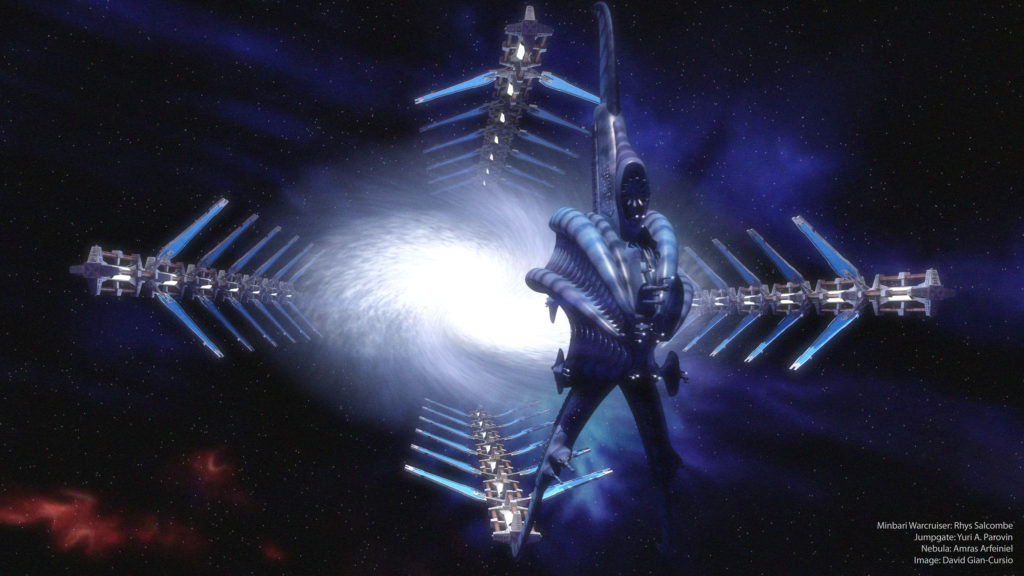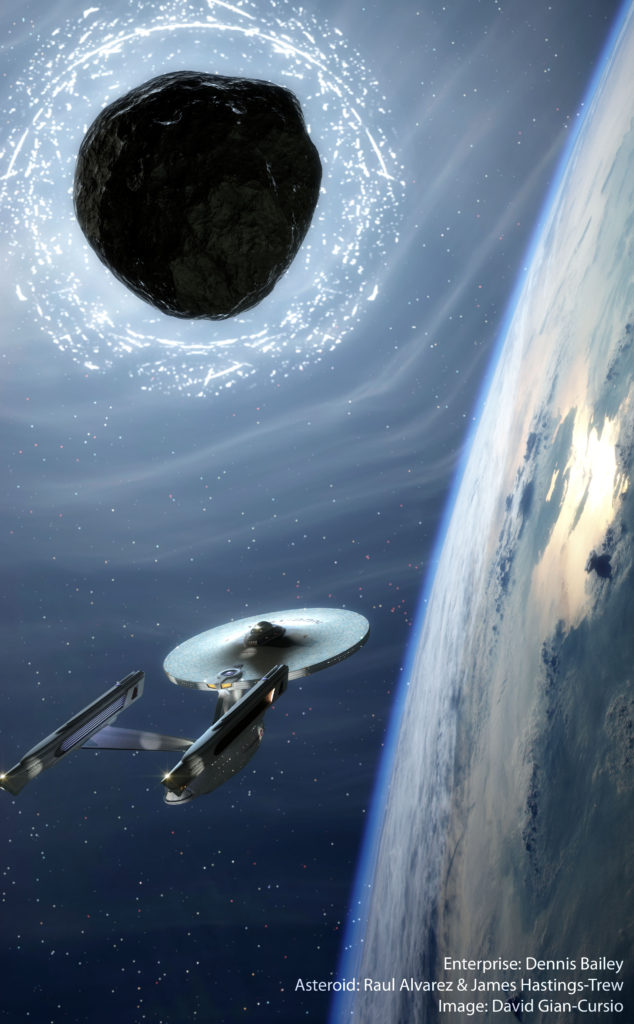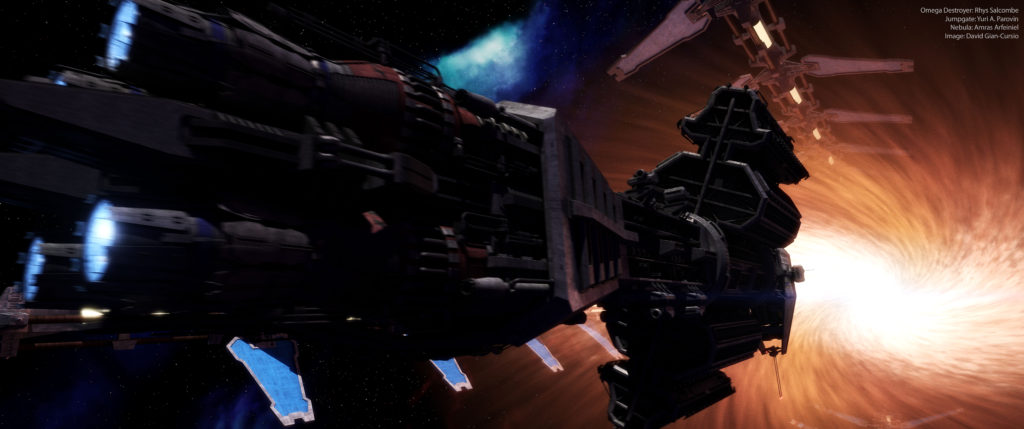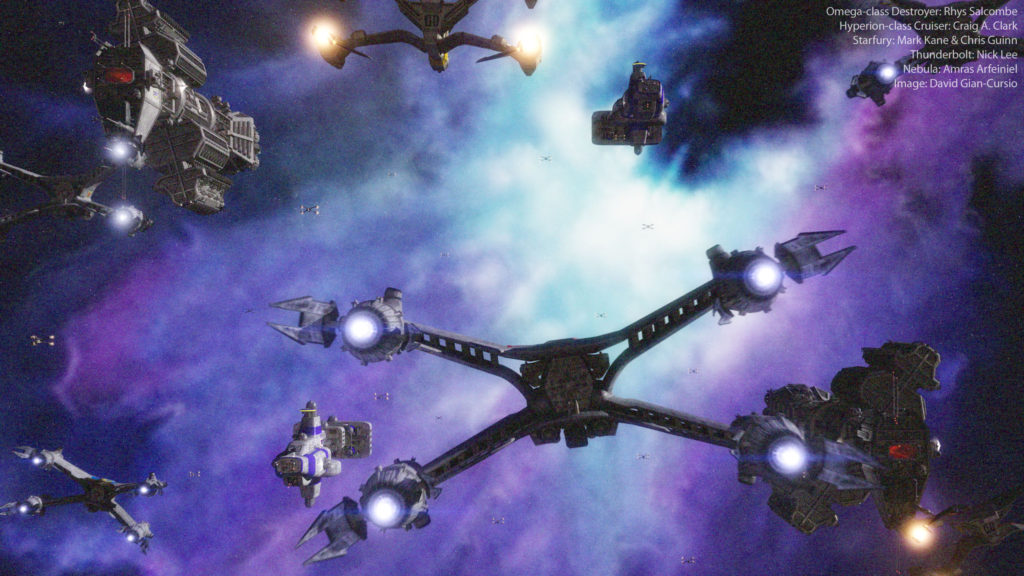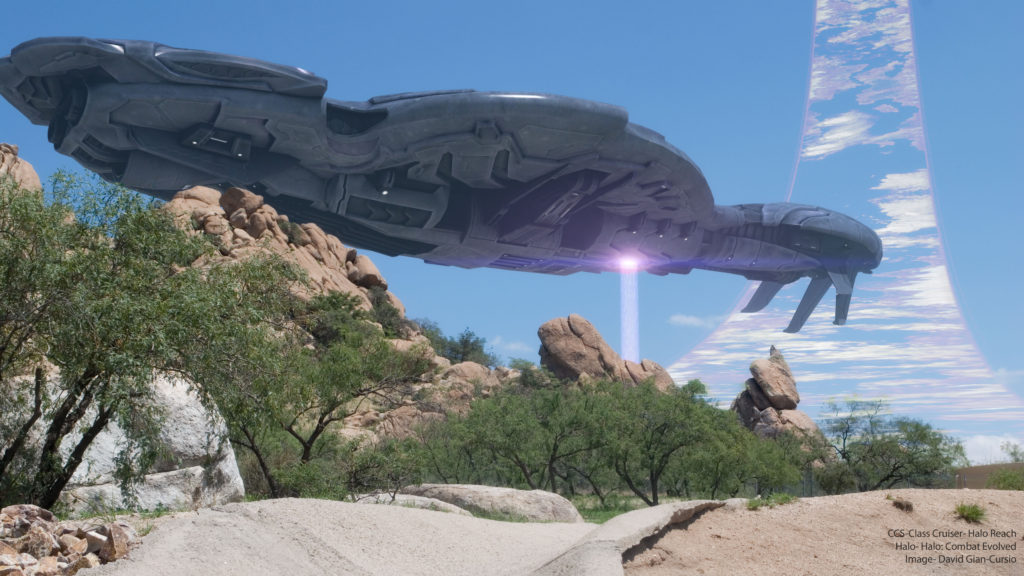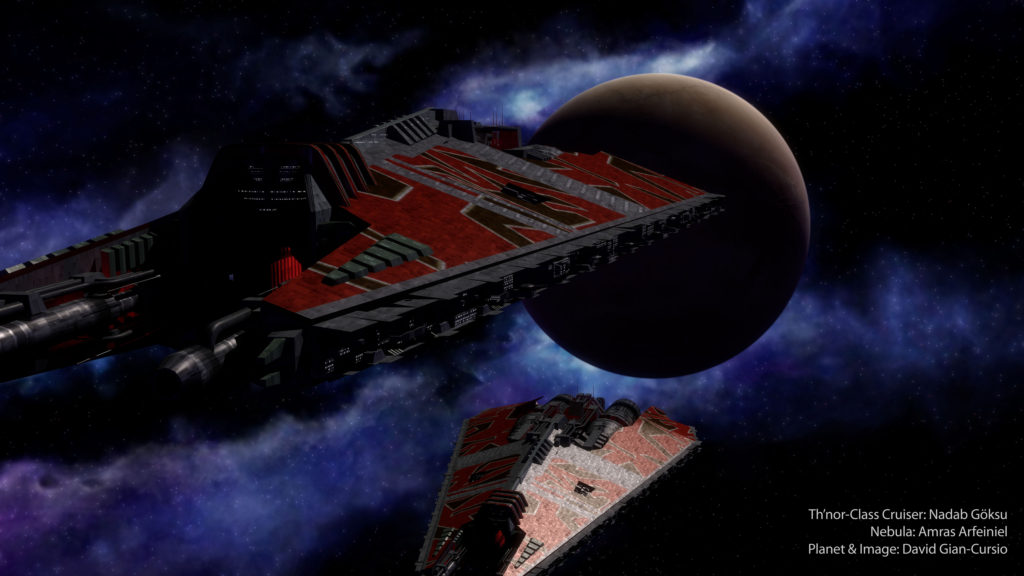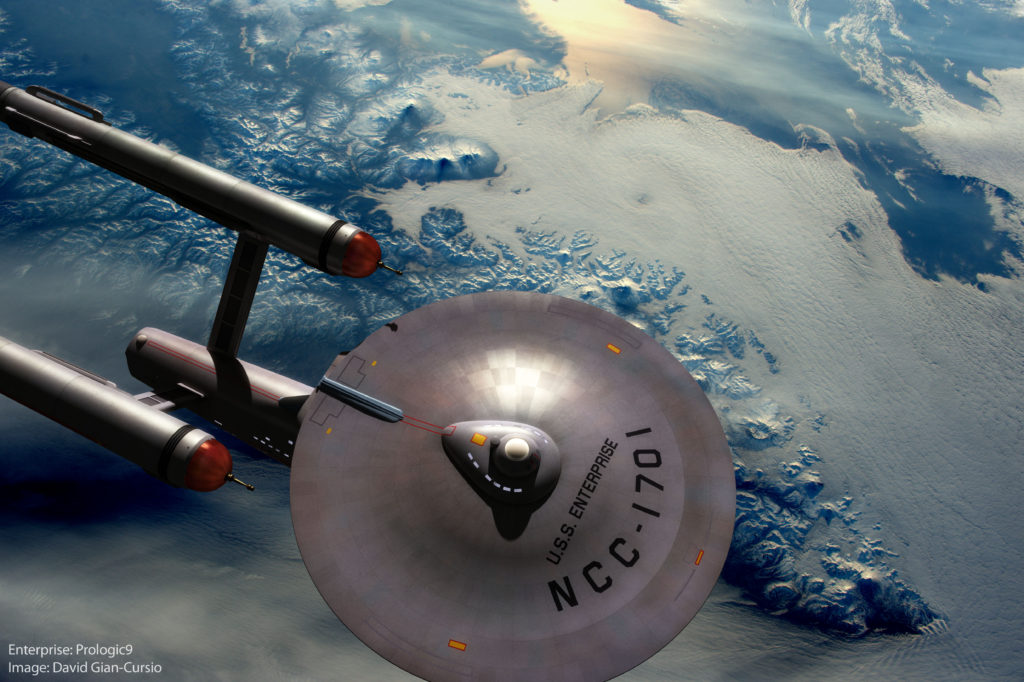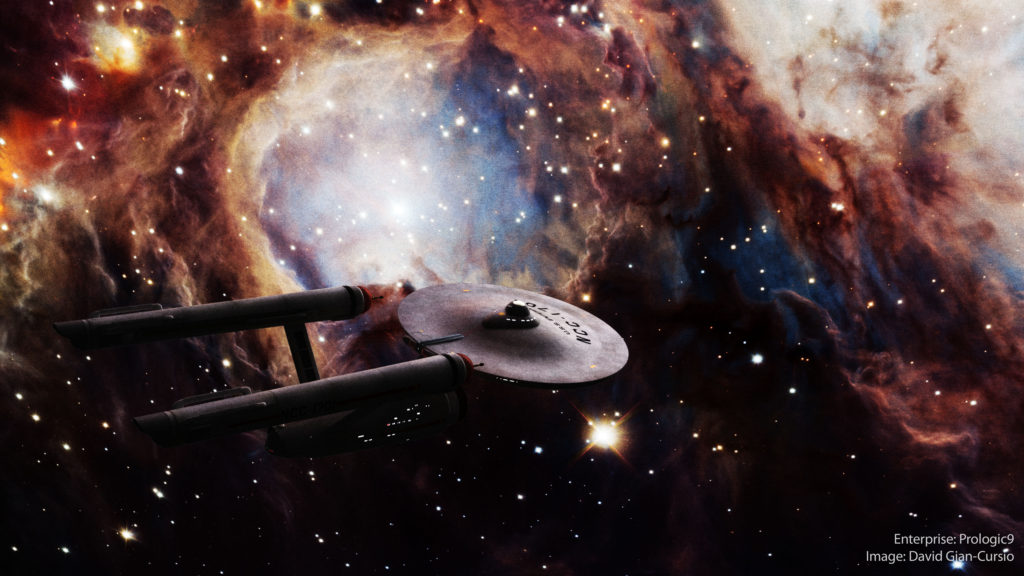 Not every experiment can be a success. I was thinking that I’d have a ’60s-style radiating-sparks effects where the Archer’s phasers hit the Klingon shields, but I drew a blank on how to actually generate it. I also wanted to try adding diffraction spikes to the stars, but that also came up short. On the plus side, I think this is my first finished dramatic image with my Archer model.
Not every experiment can be a success. I was thinking that I’d have a ’60s-style radiating-sparks effects where the Archer’s phasers hit the Klingon shields, but I drew a blank on how to actually generate it. I also wanted to try adding diffraction spikes to the stars, but that also came up short. On the plus side, I think this is my first finished dramatic image with my Archer model.
Monthly Archives: August 2016
100 Days, 100 Renders— Day 14
I was a little burned out from yesterday’s fairly elaborate image, so I went for something easy today. There is a little bit of future-proofing involved; the composition is based on a stock shot used in the Babylon 5 episode “Points of Departure.” I didn’t duplicate the animation, but it’ll give me a start whenever I come to that shot in my other project.
100 Days, 100 Renders— Day 13
I’ve mentioned before that portrait-oriented work is largely missing from my oeuvre thanks to the fact that, well, screens are horizontal. Books, posters, and smartphones, however, are not, so it’s something I’ve been meaning to address. Today’s image is an alternate cover design for a Star Trek novel, Ex Machina.
100 Days, 100 Renders— Day 12
Another simple shot today. I wanted to experiment with a very wide-angle lens.
I’m finding that stars are tricky in 5K. In reality, stars are so distant they may as well be single points, but they’re also bright enough that if they show up at all in a photograph, they’ll “bloom” outside of a single pixel. I don’t like having well-defined, circular stars (which I do my best to blur), but if I kept them down to a pixel or two in size, they wouldn’t resolve at all on most screens, between conventional resolutions and low dynamic range. Perhaps, on an HDR display, the most accurate-looking stars would be super-bright single pixels (though on such a display, you also wouldn’t need post-processed bloom, since the image would be exactly as bright as it would be in reality, so the viewer’s eye would naturally see bright objects as having glare).
Of course, in reality, you wouldn’t be able to see a single star in a photo like this, though from what I’ve read from astronauts, a few stars actually are visible to the human eye even when looking objects lit by the sun.
Deep thoughts.
100 Days, 100 Renders— Day 11
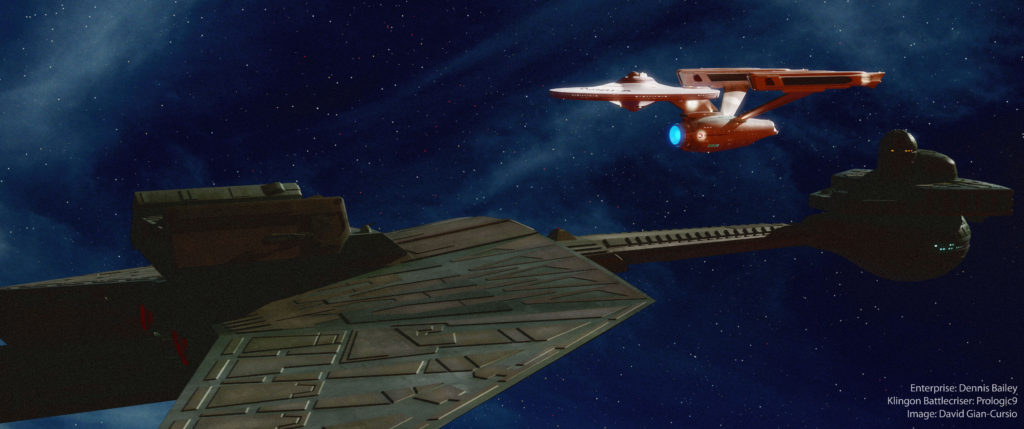 This was an older scene that I wasn’t quite happy with on my first attempt. I replaced the Enterprise with my modified version, and altered the lighting. I added in some clouds from an old sky photo give the background some nebular depth. I designed it with the idea of a companion piece from the opposite angle in mind, so the idea is that there’s a blue nebula behind the Enterprise and a red one behind the Klingon ship. It might just make the lighting look incongruous, though.
This was an older scene that I wasn’t quite happy with on my first attempt. I replaced the Enterprise with my modified version, and altered the lighting. I added in some clouds from an old sky photo give the background some nebular depth. I designed it with the idea of a companion piece from the opposite angle in mind, so the idea is that there’s a blue nebula behind the Enterprise and a red one behind the Klingon ship. It might just make the lighting look incongruous, though.
I also had to run off another pass of stars to get them to show up (I really miss rendering in passes), and did some minor touch-up work in Photoshop in addition to my usual grain-and-bloom to patch over a rendering error on one of the Enterprise’s hull markings.
100 Days, 100 Renders— Day 10
A quick-ish Babylon 5 shot. In direct defiance of my experiments a few days ago, the many fighters on-screen were not instances (I would’ve had more if they were), but were loaded in from a very old scene and hand-arranged. The trouble is, each model contained multiple objects and lights, which as far as I know doesn’t play nicely with instancing. I could’ve created single-object versions of them specifically to be instanced into large squadrons, but who has that kind of time? Not me, not anymore.
Perhaps when this is all over I’ll try to settle on to a one-render-a-week schedule so I can remain fresh while still allowing myself time to do other 3D stuff that doesn’t go directly on the screen. Not to say I regret doing this, I’m really happy about having so much new output to look at and build on (I’ve probably already exceeded the previous five years combined).
There’s another interesting thing I don’t have time to investigate. I tried to create a dolly-zoom effect so there’d be a lot of radial motion blur to create a feeling of acceleration, but it didn’t come out with any visible blur at all. I’m not sure why, but it’s something to put a pin in and revisit later on.
100 Days, 100 Renders— Day 9
Video games!
I gave some thought to the question of whether or not to use non-fan models in the project… and in general, for that matter. Games are an excellent source, since it’s often possible to recover models and textures out of them. It may require some extra work to get them to look their best, but it’s often possible to get something acceptable without a lot of trial and error, assuming I’m able to extract them at all (which can be tricky, especially since a lot of modding tools are Windows-only and all are very, very homespun.). Continue reading
100 Days, 100 Renders— Day 8
While I was visiting home, I took the opportunity to look through some old copies of Starlog magazine from when I was a kid to find some paintings of the TOS-era Enterprise I remembered. It turned out I was looking for issue 195’s article on David Mattingly’s work, but while I was flipping through, I found one that hadn’t stuck in my mind, before. An article in the September ’92 issue, about a Sci-Fi TV series just entering production called Babylon 5. Judging by the article’s content and what I can figure of the production schedule based on the JMSNews archive, it looks like the article was put together in early summer at the latest; none of the actors are mentioned, some of the characters use their pitch-brochure names or titles (Jakarr, Vice-Commander Takashima), and most of the pictures are illustrations from the pitch document. However, there are three CGI test shots that look to be Foundation Imaging (or, at least, Ron Thornton) originals; a shot of the “Green Ship” transport, a ball-shaped ship that may have been inspired by the moon lander from 2001: A Space Odyssey, and a shot of two space cruisers near a planet. Continue reading
100 Days, 100 Renders— Day 7
One full week!
I’m not sure there’s anything that’s done as much for sci-fi art as having people living full-time in orbit with a giant window and high-quality digital cameras. The background is from a photo by astronaut Tim Peake. The composition is inspired on an image of the Voyager by Mojo Lebowitz for the Ships of the Line calendar (which also was used as the cover of the novel “Full Circle”).
100 Days, 100 Renders— Day 6
As promised, another image from the days of Captain Pike. The background is a photo of the Orion Nebula I was pointed to by a blog post by the Bad Astronomer, Phil Plait.
I experimented with a variation of image-based lighting on this one. The only light source is the plane with the image of the nebula applied to it. I rendered it three times with the Photoshop render buffer export plug-in active, with the nebula set to different degrees of luminosity. I then mixed and matched passes from all three to get the final image to precisely control the look of the ship. The brightest version contributed the diffuse lighting, the medium version gave me the reflection and specularity, and the regular intensity supplied the nebula itself as it appears in the image.
While I was play with my post-processing, I experimented with a more intense, contrasty look than I usually go for, which reminded me of the original 1960s visual effects in Star Trek, and how the occasional astronomical background they used would look after being optically composited.

